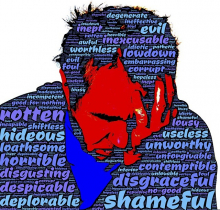One of the most simplest things ever made was the scaffold. Thinking about its consequences however has recently opened up a world of possibilities for scientists that might lead to new ways of thinking about culture, the human mind, and their development.
MacDonalds' Rice-burger in Asia; Starbucks’ Coffee Mooncake in Singapore; Disneyland Yin-Yang Mickey Mouse Cookies in Hong Kong; Lay's Peking Duck Flavored Potato Clip … The list can go on. What is common in all these examples is that they are all novel product ideas created by integrating seemingly non-overlapping cultural or product ideas from Eastern and Western cultures.
The beginning of the 20th century featured an understanding of health that was dominated by a biomedical perspective, characterized by a reductionist point of view in which health was defined as the absence of illness. This view has long been replaced by a biopsychosocial model that emphasizes the role played by socio-cultural forces in the shaping of health (and illness) and related psychological experiences (Engel, 1977).
Imagine that your national football team has to play against the team of a neighboring country. You are very excited about this event and invited your friends over to watch the game together. When the other team scores a second goal and is winning, you see that the football fans of that team are burning your national flag in the stadium.
This paper discusses honor and its effects on emotion. The paper is divided into two parts. In the first part, the definition of honor is discussed. This section answers the questions ‘what is honor,’ and ‘are there different types of honor?’ Later, there is an overview on the ways in which honor influences emotional experiences and expressions. Throughout the paper, conclusions are reached based on honor and emotion research in Mediterranean, Northern European, North American and Middle-Eastern cultures.



